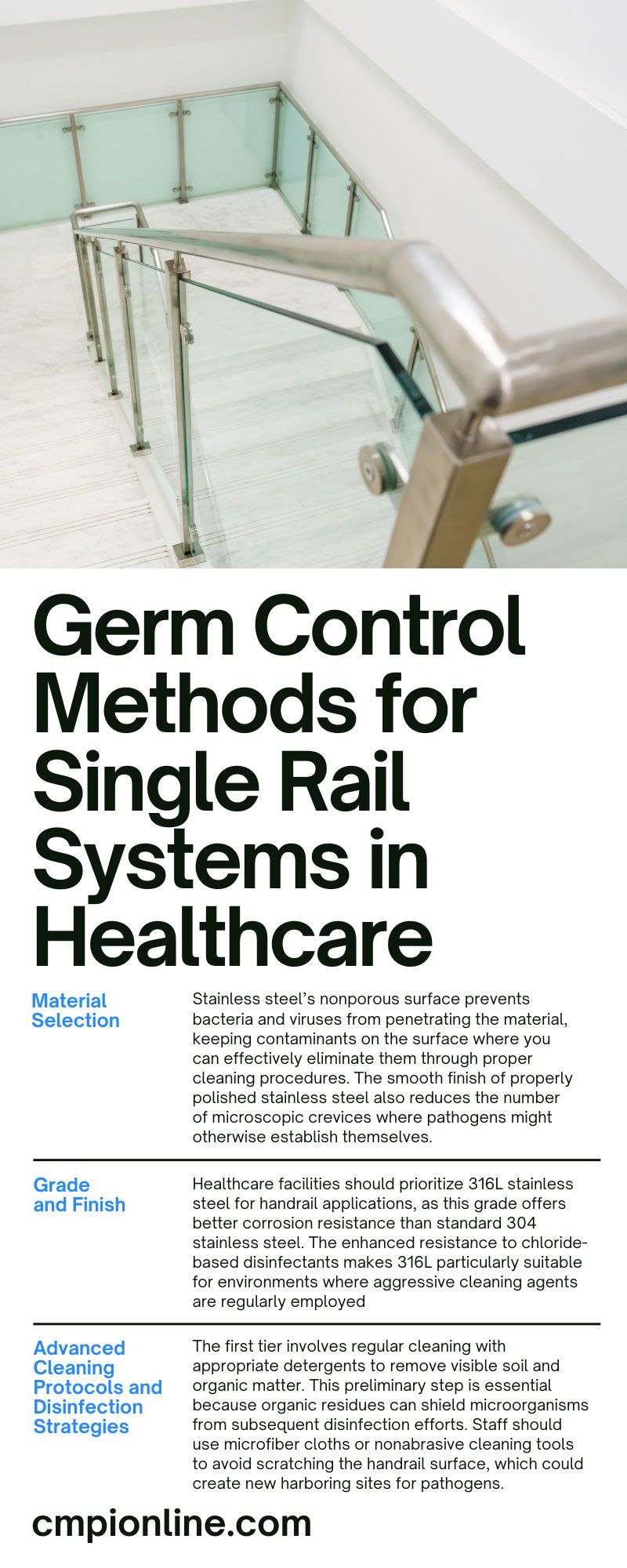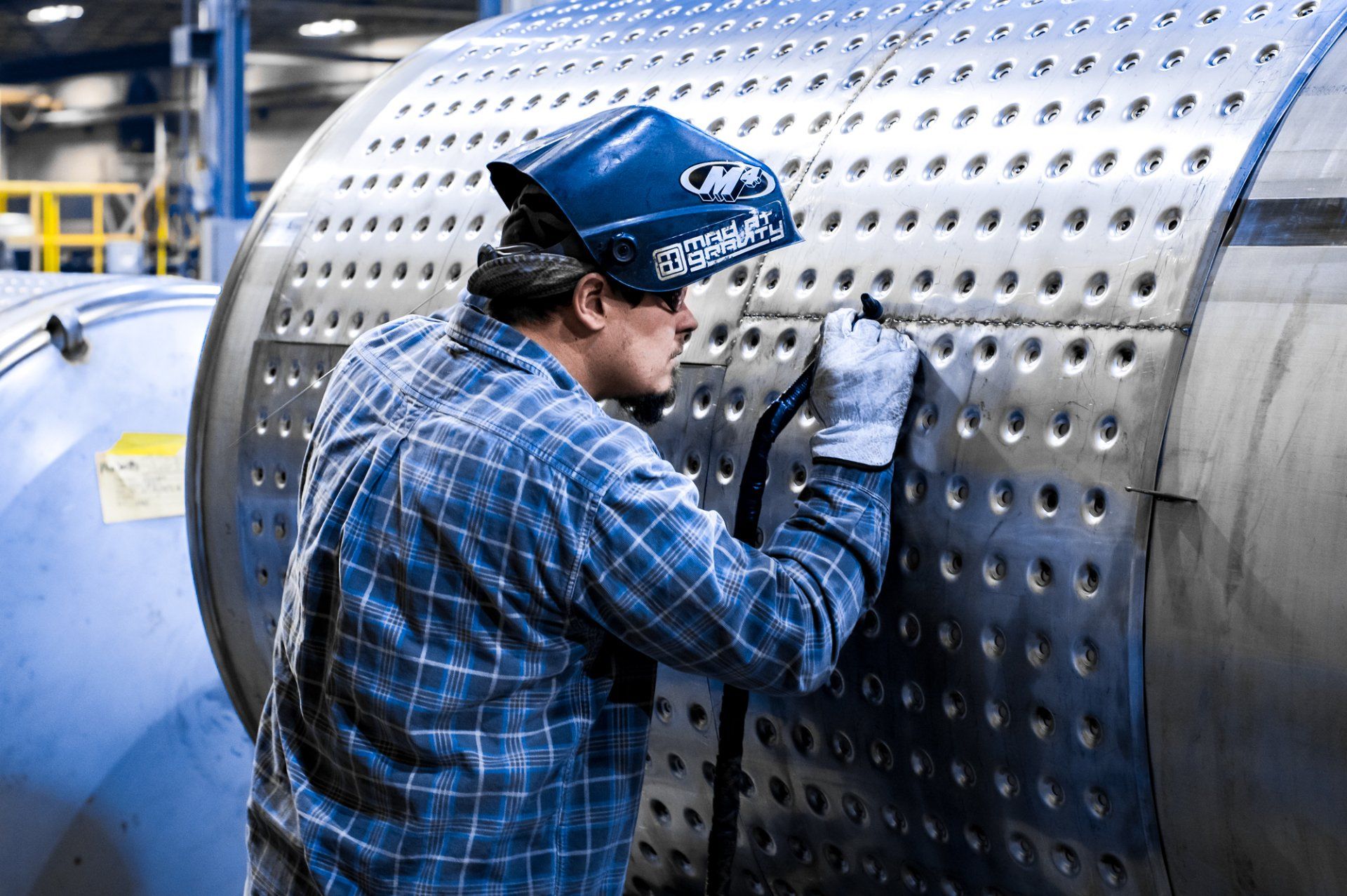Germ Control Methods for Single Rail Systems in Healthcare

Maintaining sterile environments in healthcare facilities is an ongoing challenge. Among the many surfaces that require careful attention, handrail systems present unique concerns due to their frequent contact with hands and their critical role in mobility assistance. Single rail systems serve as essential infrastructure in hospitals, clinics, and long-term care facilities, but they also function as potential vectors for pathogen transmission if not properly managed. Ensuring these touchpoints remain hygienic is a crucial part of guaranteeing patient and staff safety.
Material Selection
The foundation of effective germ control begins with selecting appropriate materials for handrail construction. Stainless handrail systems are currently the gold standard in healthcare applications due to their exceptional antimicrobial properties and resistance to corrosion from repeated disinfection cycles.
Stainless steel’s nonporous surface prevents bacteria and viruses from penetrating the material, keeping contaminants on the surface where you can effectively eliminate them through proper cleaning procedures. The smooth finish of properly polished stainless steel also reduces the number of microscopic crevices where pathogens might otherwise establish themselves.
Grade and Finish
Selecting the appropriate material grade and finish is another effective germ control method used to protect the single-rail systems commonly found in healthcare environments.
Healthcare facilities should prioritize 316L stainless steel for handrail applications, as this grade offers better corrosion resistance than standard 304 stainless steel. The enhanced resistance to chloride-based disinfectants makes 316L particularly suitable for environments where aggressive cleaning agents are regularly employed.
Beyond material composition, surface finish plays a crucial role in hygiene maintenance. Mirror-polished surfaces provide the smoothest finish, minimizing surface irregularities that could harbor microorganisms. However, facilities must balance the hygienic benefits of mirror finishes against practical considerations such as fingerprint visibility and maintenance requirements.
Design Considerations
Design plays a crucial role in minimizing the accumulation of germs on single-rail systems. Some key considerations include the following:
• Rounded edges: Rounded or beveled edges are easier to clean and reduce the likelihood of injury, supporting both safety and hygiene.
• Proper mounting height: Installing rails at the correct height for patient accessibility encourages consistent use while reducing the need to touch multiple surfaces for support.
• Visible and accessible placement: Position rails where they are easily visible and accessible, reducing awkward movements that might lead to accidental contact with other surfaces.
• Ergonomic grip design: Rails shaped for comfortable gripping encourage proper use and reduce unnecessary hand contact with surrounding surfaces.
• Color contrast: Using contrasting colors for rails helps patients with visual impairments locate them easily, reducing accidental touches of other surfaces.
When healthcare facilities invest in these subtle but impactful design choices, they create an environment where patient safety and cleanliness are tied to the infrastructure.
Advanced Cleaning Protocols and Disinfection Strategies
Effective germ control for handrail systems requires a systematic approach. Healthcare facilities must implement multitiered cleaning protocols that address both routine maintenance and intensive disinfection cycles.
The first tier involves regular cleaning with appropriate detergents to remove visible soil and organic matter. This preliminary step is essential because organic residues can shield microorganisms from subsequent disinfection efforts. Staff should use microfiber cloths or nonabrasive cleaning tools to avoid scratching the handrail surface, which could create new harboring sites for pathogens.
Following initial cleaning, facilities should apply EPA-approved disinfectants formulated for healthcare use. These products must demonstrate efficacy against the broad spectrum of pathogens commonly encountered in healthcare settings, including MRSA, C. difficile spores, and various viral agents, including norovirus and influenza.
Advanced Germ Control Methods
In addition to traditional cleaning, healthcare facilities are increasingly adopting advanced germ control technologies to enhance safety.
• Applying long-lasting antimicrobial coatings to rails can inhibit bacterial growth between cleaning cycles. These coatings are especially valuable in high-traffic areas.
• Facilities can use ultraviolet-C light for rapid disinfection of surfaces in unoccupied rooms or during off-peak hours. While not a replacement for manual cleaning, it adds an extra layer of protection.
• Integrating touchless or sensor-activated systems where feasible reduces the number of surfaces that patients and staff need to contact.
• Incorporating copper alloys into rail systems provides natural antimicrobial properties, continuously reducing bacterial survival between cleanings.
• Using electrostatic sprayers ensures disinfectants coat all surfaces of the rail evenly, reaching areas that are often missed with manual wiping.
Combining these advanced measures with proper design and cleaning routines offers a multilayered approach to infection control.
Staff Training and Protocol Compliance
The most sophisticated germ control systems cannot succeed without properly trained staff who understand and consistently follow established protocols. Training programs should address both the scientific principles behind germ control and the practical implementation of cleaning procedures.
Include hands-on training with actual cleaning products and equipment as well. This ensures that staff can properly execute cleaning procedures. Leaders can demonstrate correct cleaning techniques, appropriate personal protective equipment use, and proper handling and disposal of cleaning materials.
Implementation of Smart Monitoring Systems
Modern healthcare facilities are increasingly adopting smart monitoring technologies to ensure consistent application of germ control protocols. These systems provide real-time feedback on cleaning compliance and can identify areas requiring immediate attention.
For instance, RFID tracking systems can monitor staff cleaning activities and verify that they are following prescribed protocols at the specified intervals. These systems generate detailed logs that document cleaning times, products used, and staff members responsible for each cleaning cycle.
ATP (adenosine triphosphate) monitoring devices provide a rapid assessment of surface cleanliness by measuring organic residues that indicate inadequate cleaning. Regular ATP testing of handrail systems can identify problem areas and verify the effectiveness of cleaning procedures.
Integration With Facility Design and Workflow
Effective germ control for handrail systems requires careful integration with overall facility design and workflow patterns. The placement, configuration, and accessibility of handrail systems significantly impact the feasibility of maintaining effective cleaning protocols.
Handrail systems should have adequate clearance around all surfaces to allow thorough cleaning access. Avoid complex geometries with tight corners or recessed areas, as they can harbor contaminants and make effective cleaning difficult or impossible.
When selecting mounting hardware and connection methods, consider cleaning requirements. Seamless connections and minimal hardware reduce the number of surfaces requiring attention and eliminate potential contamination sites.
Maximizing Safety Through Comprehensive Germ Control
Germ control methods for single rail systems in healthcare require a holistic strategy that addresses design, material selection, cleaning protocols, staff training, and maintenance. Facilities looking to implement or upgrade their handrail systems should consider working with a specialized manufacturer like CMPI. We provide custom solutions tailored for infection control and durability.






